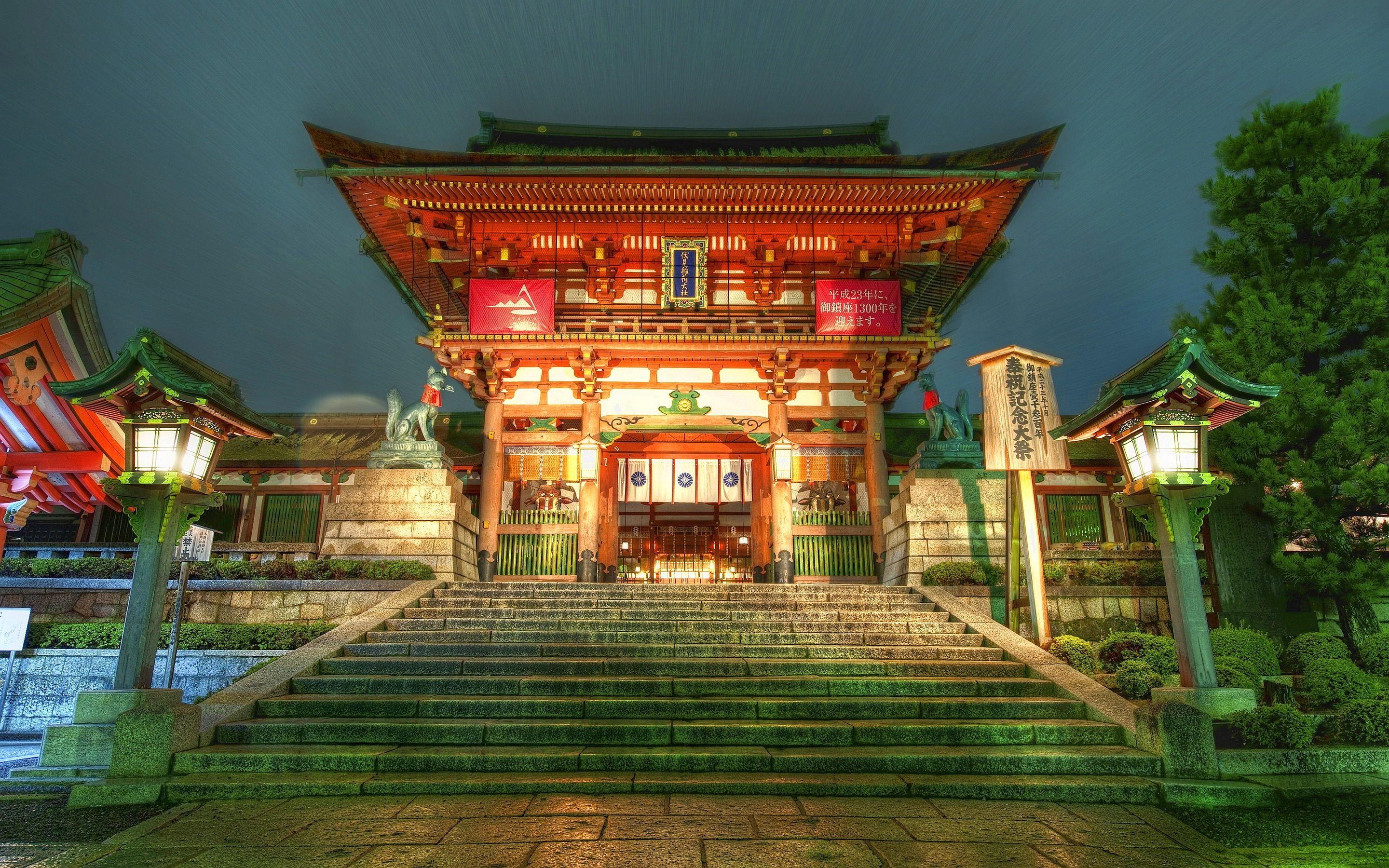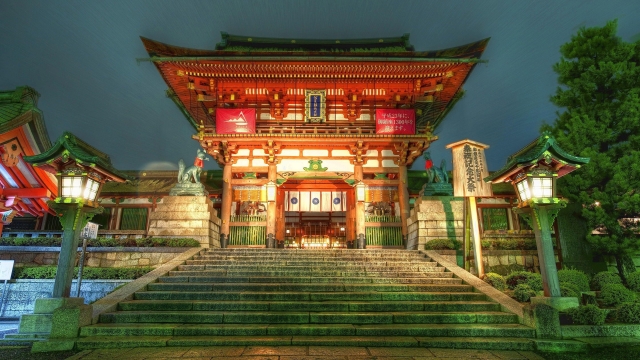
Japan is a land steeped in rich traditions and spiritual depth, where the whispers of the ancients resonate through its serene landscapes. At the heart of this cultural tapestry lies Shinto, the indigenous faith that has shaped the nation for centuries. Shinto shrines, known as jinja, serve as the gateways to the divine, each one uniquely reflecting the beliefs and practices of its surrounding community. From the vibrant torii gates that mark their entrances to the tranquil gardens that envelop them, these shrines are more than mere structures; they are sacred spaces that invite contemplation and connection with the natural world.
As we explore the enchanting Shinto shrines in Japan, we journey through time and spirituality. Each shrine tells a story, whether it be through its architectural beauty, its festivals, or the rituals performed by devoted practitioners. These sites are not only places of worship but also symbols of the harmony that exists between humanity and nature. With thousands of shrines scattered across the archipelago, from the bustling streets of Kyoto to the remote corners of rural Japan, the allure of Shinto shrines captivates visitors and locals alike, encouraging a deeper appreciation for the traditions that have endured through the ages.
Historical Significance of Shinto Shrines
Shinto shrines in Japan are not just places of worship; they embody the essence of Japan’s cultural heritage and spiritual life. Originating over a millennium ago, these shrines serve as a testament to the Japanese people’s enduring connection with nature, ancestors, and the divine. The architectural styles of these shrines, with their distinct purity and simplicity, reflect the belief that sacred spaces must harmonize with their surroundings, allowing for a seamless blend of the spiritual and the natural world.
Throughout Japan’s history, shinto shrines have played a pivotal role during significant social and political changes. They were integral to the establishment of the imperial family’s legitimacy and authority, functioning as focal points for national identity and solidarity. Major historical events, such as the Meiji Restoration, saw the elevation of Shinto as a state religion, reinforcing its importance in shaping the country’s political landscape and cultural norms.
Furthermore, many shinto shrines are associated with myths and legends that date back to ancient times. These myths often recount the creation of the Japanese archipelago and the gods that govern the land. Each shrine holds a unique narrative, enriching the local culture and fostering community identity. As custodians of these stories, shinto shrines not only preserve history but also continue to inspire reverence and exploration among both locals and visitors, anchoring Japan’s rich traditions into the modern era.
Architectural Features and Design
Shinto shrines in Japan are distinguished by their unique architectural styles that harmonize with nature. These structures are often built using natural materials such as wood and stone, reflecting the Shinto belief in living in accordance with the natural world. A typical shrine is characterized by its torii gate, which marks the transition from the mundane to the sacred. These gates are crafted from wood or stone and often stand in front of the shrine to symbolize the entrance to a sacred space.
One of the most notable architectural elements of Shinto shrines is the honden, the main hall where the kami, or deities, are enshrined. The design of the honden can vary significantly between shrines, ranging from simple and austere to intricately decorated structures. Many honden feature a thatched roof, which is not only aesthetically pleasing but also practical, providing insulation and protection against the elements. The use of asymmetry in design and the avoidance of straight lines are common, as harmony with nature is paramount.
The overall layout of Shinto shrines is meticulously planned, often incorporating a series of structures that lead the visitor from the entrance to the main hall. This progression creates a sense of journey and reverence. Sacred trees, water sources, and stones are frequently integrated into the shrine grounds, enhancing the spiritual atmosphere. Each element within the shrine’s design serves to connect worshippers to the kami, embodying the profound relationship between nature, spirituality, and architecture in Shinto tradition.
Cultural Practices and Rituals
Shinto shrines in Japan are not only architectural wonders but also sacred spaces where various cultural practices and rituals unfold. One of the most significant rituals is the "Shinto wedding ceremony," which beautifully merges traditional elements with modern influences. Couples often dress in traditional attire, with the bride wearing a stunning white kimono adorned with intricate patterns. The ceremony usually takes place within the shrine grounds, where the couple is blessed by a Shinto priest and offered prayers to the kami, or spirits, signifying a harmonious union blessed by the divine.
Festivals, known as "matsuri," are vibrant events celebrated at Shinto shrines throughout Japan. These festivals often commemorate seasonal changes, agricultural cycles, or significant historical events. During these celebrations, the shrines become lively hubs of activity, filled with music, dance, and colorful processions. Local communities come together to partake in traditional practices such as the carrying of portable shrines, or “mikoshi,” which are believed to house the kami temporarily. The atmosphere is infused with joy, reflecting the deep-rooted reverence for both nature and the divine.
Additionally, daily rituals at Shinto shrines maintain a connection between individuals and the spiritual world. Visitors often engage in practices such as purifying themselves with water at the "temizuya" (purification fountain) before entering the shrine. Offering small coins, bowing, and clapping hands are customary actions that express gratitude and respect towards the kami. These practices are not merely ceremonial but serve to cultivate a mindful connection to nature, ancestry, and the community, ensuring that the sacred traditions continue to thrive in contemporary Japan.
Notable Shinto Shrines in Japan
神社 おすすめ
One of the most famous Shinto shrines in Japan is Ise Jingu, located in Mie Prefecture. This shrine is dedicated to the sun goddess Amaterasu and is considered the most sacred Shinto shrine in the country. Ise Jingu consists of two main shrines, Naikū and Gekū, and is visited by millions of pilgrims and tourists each year. The shrine’s architecture is characterized by its simplicity and wooden structures, embodying the spirit of Shinto aesthetics.
Another prominent shrine is Fushimi Inari Taisha in Kyoto, known for its iconic thousands of vermilion torii gates that create magical pathways up the sacred Mount Inari. Dedicated to Inari, the Shinto god of rice and agriculture, this shrine not only serves as a spiritual site but also as a stunning visual representation of Japan’s rich cultural heritage. Visitors can explore the trails that wind through lush forests, offering both a spiritual journey and a picturesque hike.
Meiji Jingu, located in Tokyo, is another noteworthy Shinto shrine that honors Emperor Meiji and Empress Shoken. Set within a tranquil forested area, it provides a serene escape from the bustling city. This shrine is particularly popular for weddings and traditional ceremonies, as it represents the harmony between the old and the new in Japanese culture. The beautiful gardens and peaceful atmosphere attract visitors year-round, making it a must-see destination for anyone exploring Japan’s Shinto heritage.



